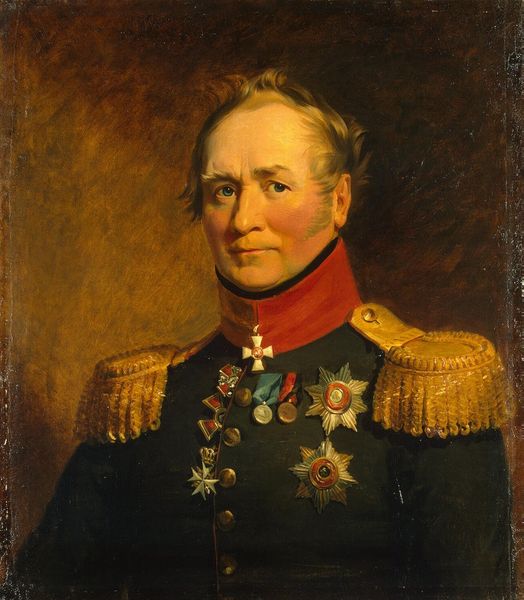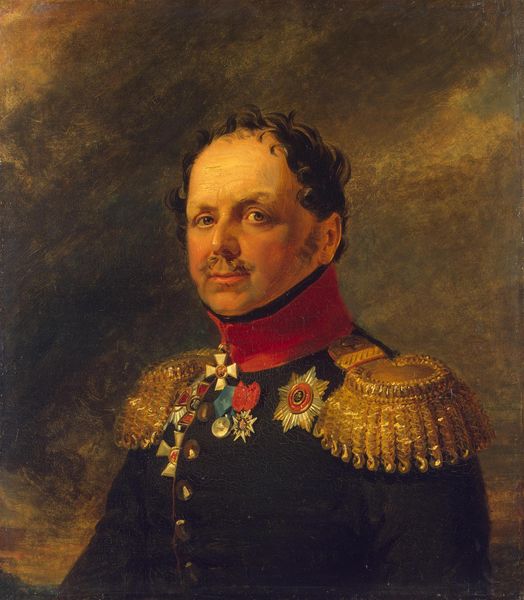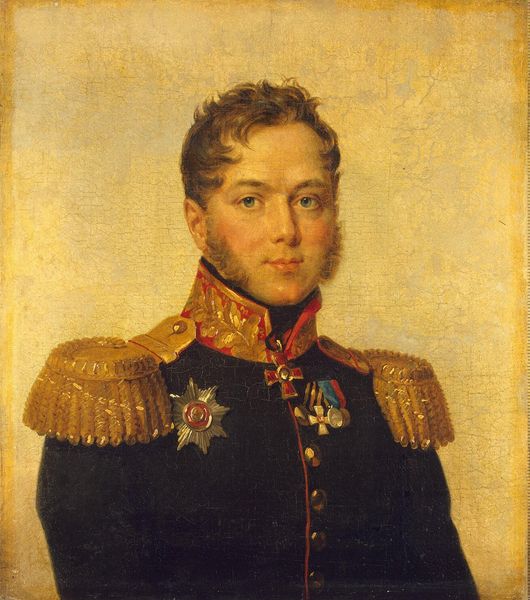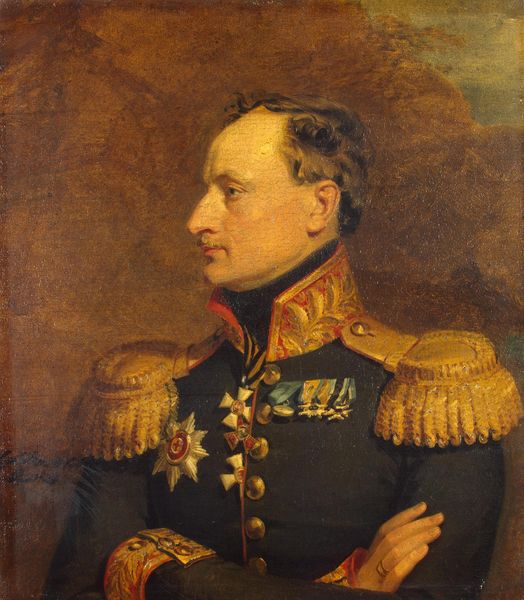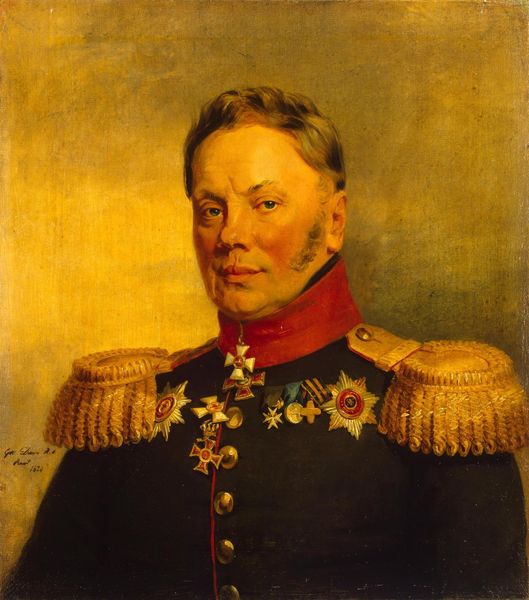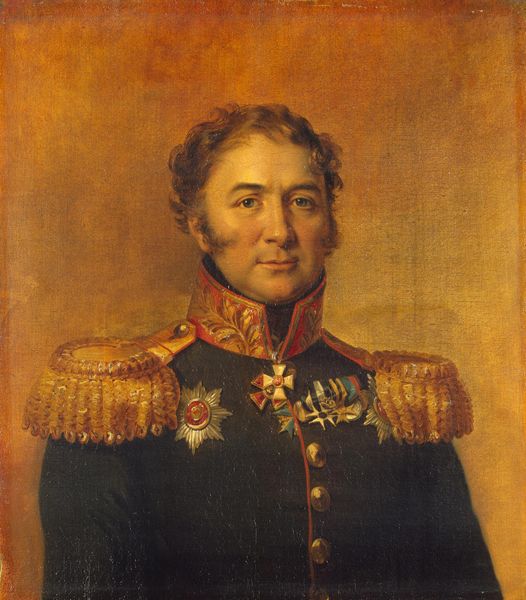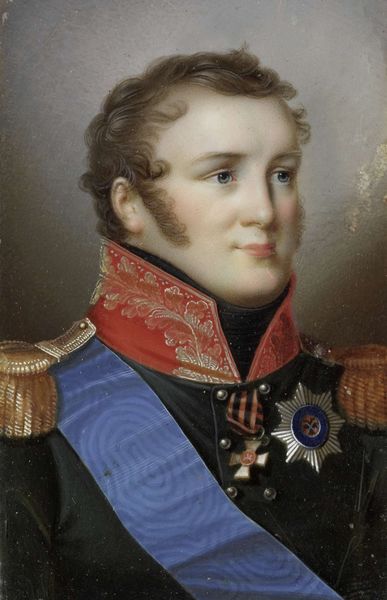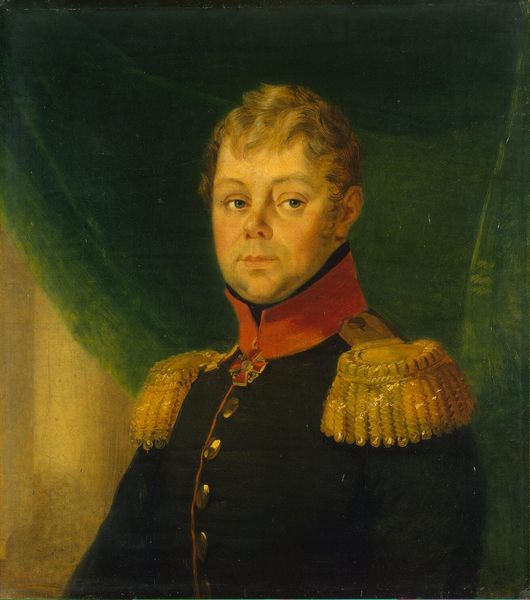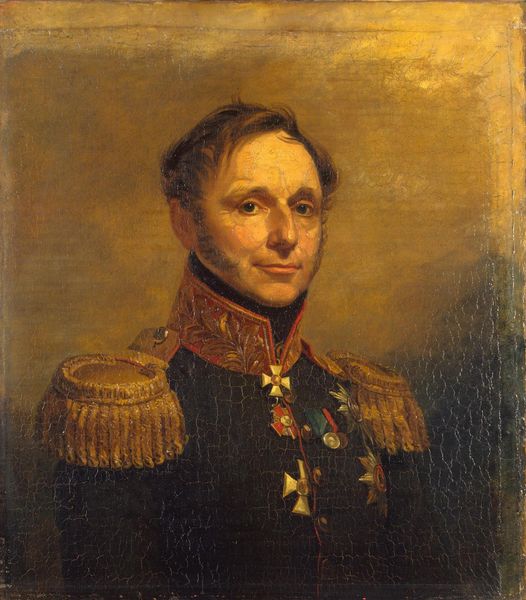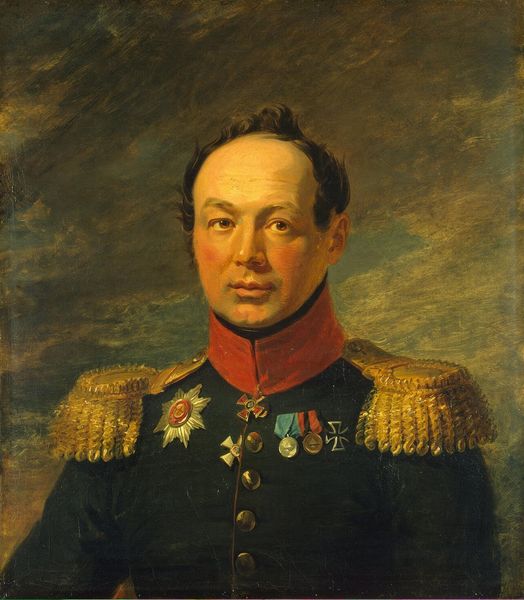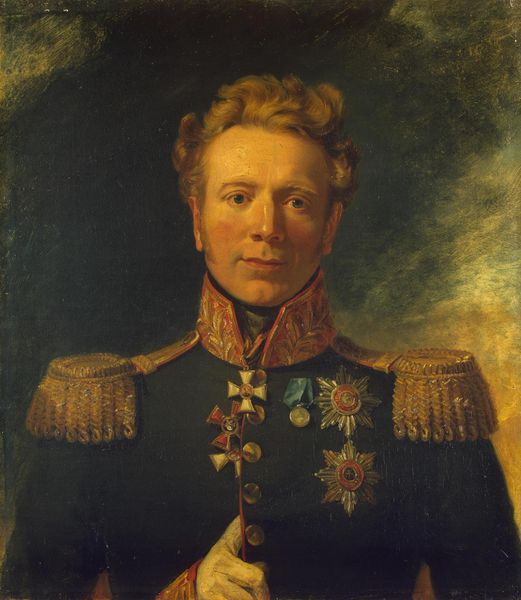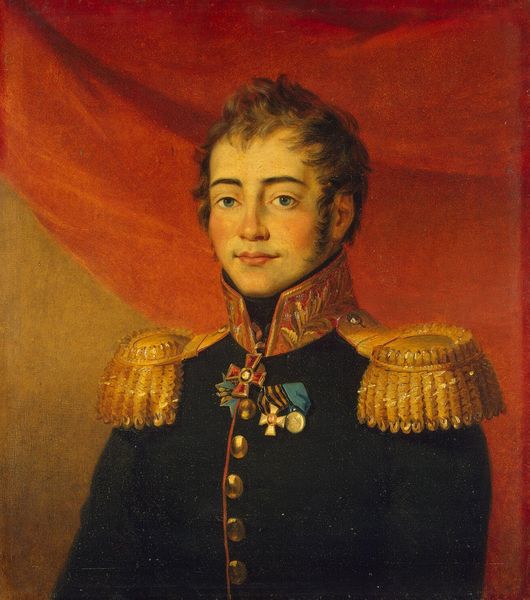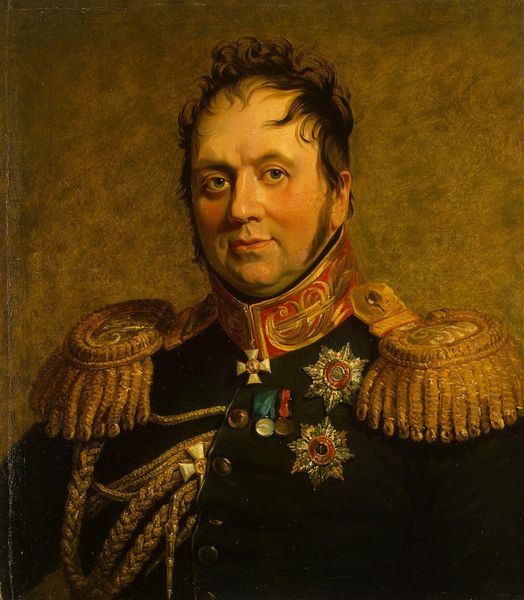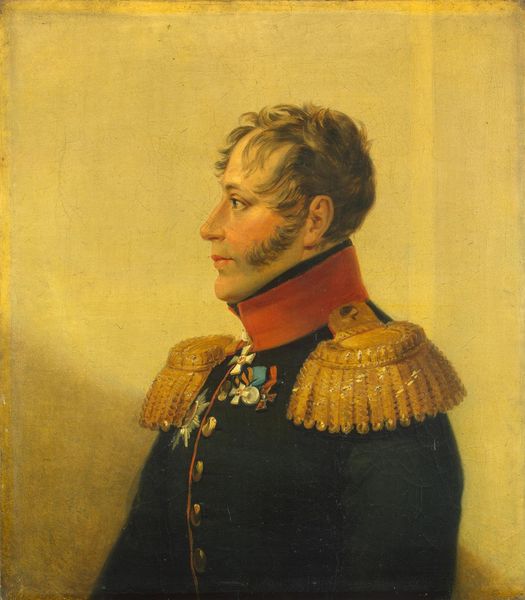
painting, oil-paint
#
portrait
#
painting
#
oil-paint
#
romanticism
#
history-painting
Dimensions: height 76.5 cm, width 64.5 cm, depth 10 cm
Copyright: Rijks Museum: Open Domain
Curator: Here we have Carl Gustaf Hjalmar Mörner’s “Portrait of Alexander I, Emperor of Russia," believed to have been completed before 1837, using oil paint. Editor: My initial impression is one of a certain vulnerability, even a hint of melancholy. The subject gazes slightly off-center, as if distracted. His dress and medals tell of immense status, yet there's a palpable human quality here that’s somewhat affecting, don't you think? Curator: Absolutely. Mörner's painting style blends realism with elements of Romanticism. Look closely and you’ll notice he uses light and shadow not just to depict the Emperor’s physical presence, but perhaps to convey his psychological state as well. He seems trapped by duty, burdened perhaps. Editor: The weight of the epaulettes, so precisely detailed, feels like a literal symbol of his responsibilities. And yet, I'm drawn to the delicate rendering of his face, almost cherubic, despite the formality of the pose. It’s as if the artist wanted to glimpse beyond the Emperor persona. I suppose history will render any portrait subject iconic eventually. Curator: True. What fascinates me about this image is the question of truth, both perceived and intended. Every element—the uniform, the decorations, the slight blush of his skin—is laden with symbolism and political weight. But how does Mörner subtly reveal the inner man, struggling beneath that weight? The composition steers towards an iconography, but he steers against it also. Editor: And there is, isn’t there? In the gaze. Mörner offers us a version of leadership, and yet subverts it by finding, or perhaps imagining, a vulnerable individual. Perhaps this portrait is a subtle rumination on the nature of power itself. Curator: Precisely! Mörner’s brush invites us to not just observe, but to interpret—to participate in constructing our own understanding of Alexander I. A potent effect and beautifully conveyed, I think. Editor: Indeed. This portrait invites us to consider the burden of leadership. Fascinating, absolutely fascinating.
Comments
No comments
Be the first to comment and join the conversation on the ultimate creative platform.
